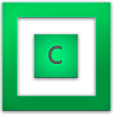Howdy, Stranger!
It looks like you're new here. If you want to get involved, click one of these buttons!
covecube.com
community.covecube.com
blog.covecube.com
wiki.covecube.com
bitflock.com
stablebit.com
Categories
Poll
No poll attached to this discussion.In order to better support our growing community we've set up a new more powerful forum.
The new forum is at: http://community.covecube.com
The new forum is running IP.Board and will be our primary forum from now on.
This forum is being retired, but will remain online indefinitely in order to preserve its contents. This forum is now read only.
Thank you,
What are the benefits of DrivePool over Raid 5
I'm coming from WHS v1 and the lost of drive extender, is unfortunate. I have four 1 TB drives and looking for a solution for redundancy of my information. It seems like drive pool would be more beneficial over Raid 5 on which I have three drives in Raid 5 using Disk Management in Windows. It leaves me with just under 2 TB which I believe because of the 33 percent parity when the raid is constructed. Using drive pool (duplication) though is pretty much a 50 percent loss if you have fill up the drive, right? Should I just go a hardware raid? I'm using small factor Acer H340 so I have only limited choices with one PCIx slot to work with otherwise I would have gone that way already but at the same time i probably would have a chip set raid if I had a bigger mobo. Some suggestions!

 Download your copy of the StableBit DrivePool, StableBit Scanner or StableBit CloudDrive here
Download your copy of the StableBit DrivePool, StableBit Scanner or StableBit CloudDrive here Follow Covecube on Twitter.
Follow Covecube on Twitter.
Comments